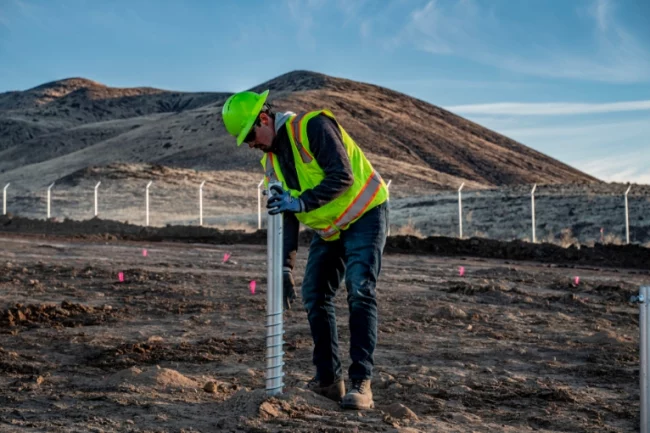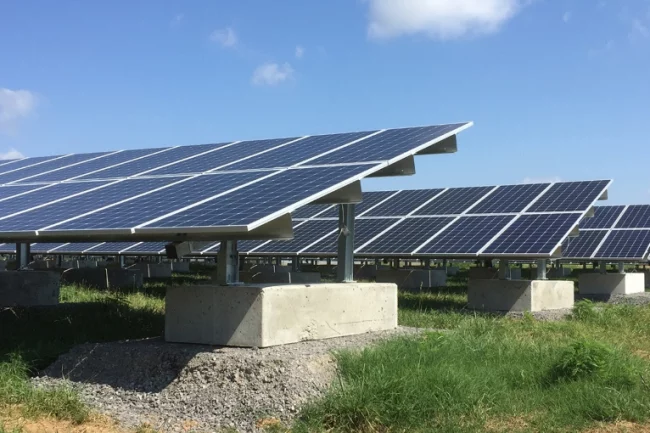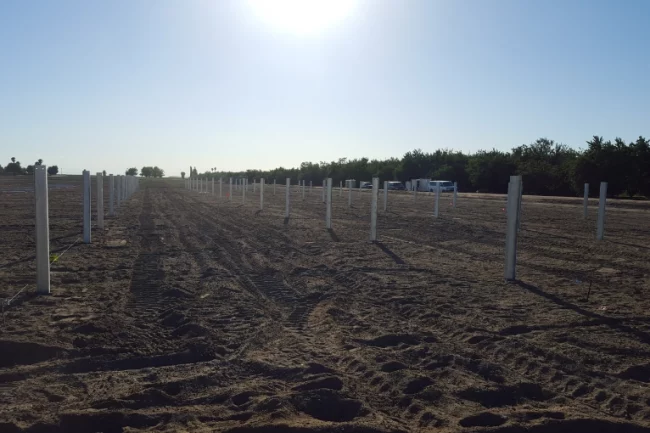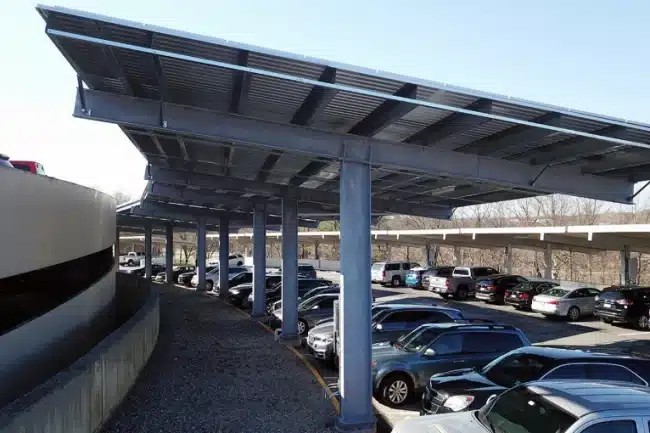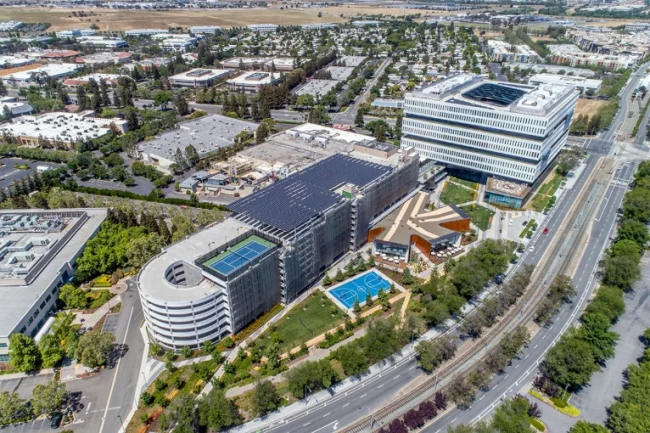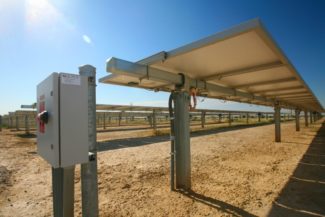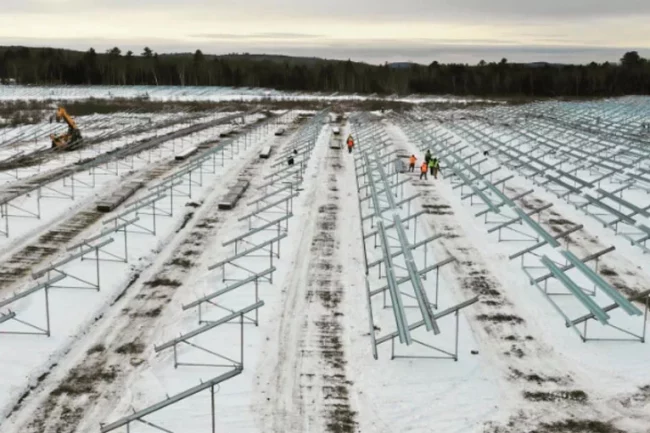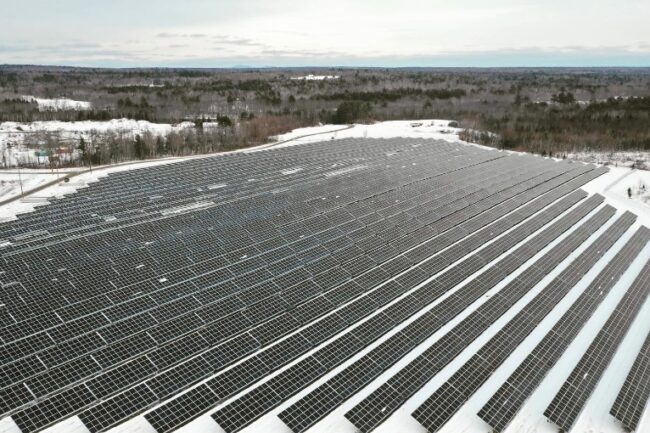The Northeast is a region that has much potential for solar growth. But building solar in the Northeast comes with unique challenges, chief among them the region’s harsh weather and tough terrain. For solar developers and landowners, the overall success of your site can hinge on many complex factors, which you will need to consider at every stage of the development cycle.
Having the right measures in place—be it the most suitable products or the best mitigation strategies for potential issues—is the only way to boost your margins, increase net present value (NPV), and improve your internal rate of return (IRR). Conversely, failing to plan and equip yourself for these challenges could result in eroded budgets and decreased productivity—affecting your returns and bankability.
Here are five things to consider when building in the Northeast.
1. Choosing solid foundations
The Northeast’s diverse terrain means that developers will often find themselves building on slopes, marshlands, and former farmlands. In the past, these were not ideal for profitable solar, as the costs often outweighed potential returns, but today we have comprehensive solutions—including foundations that cut refusal risk and are uniquely adapted to difficult terrain.
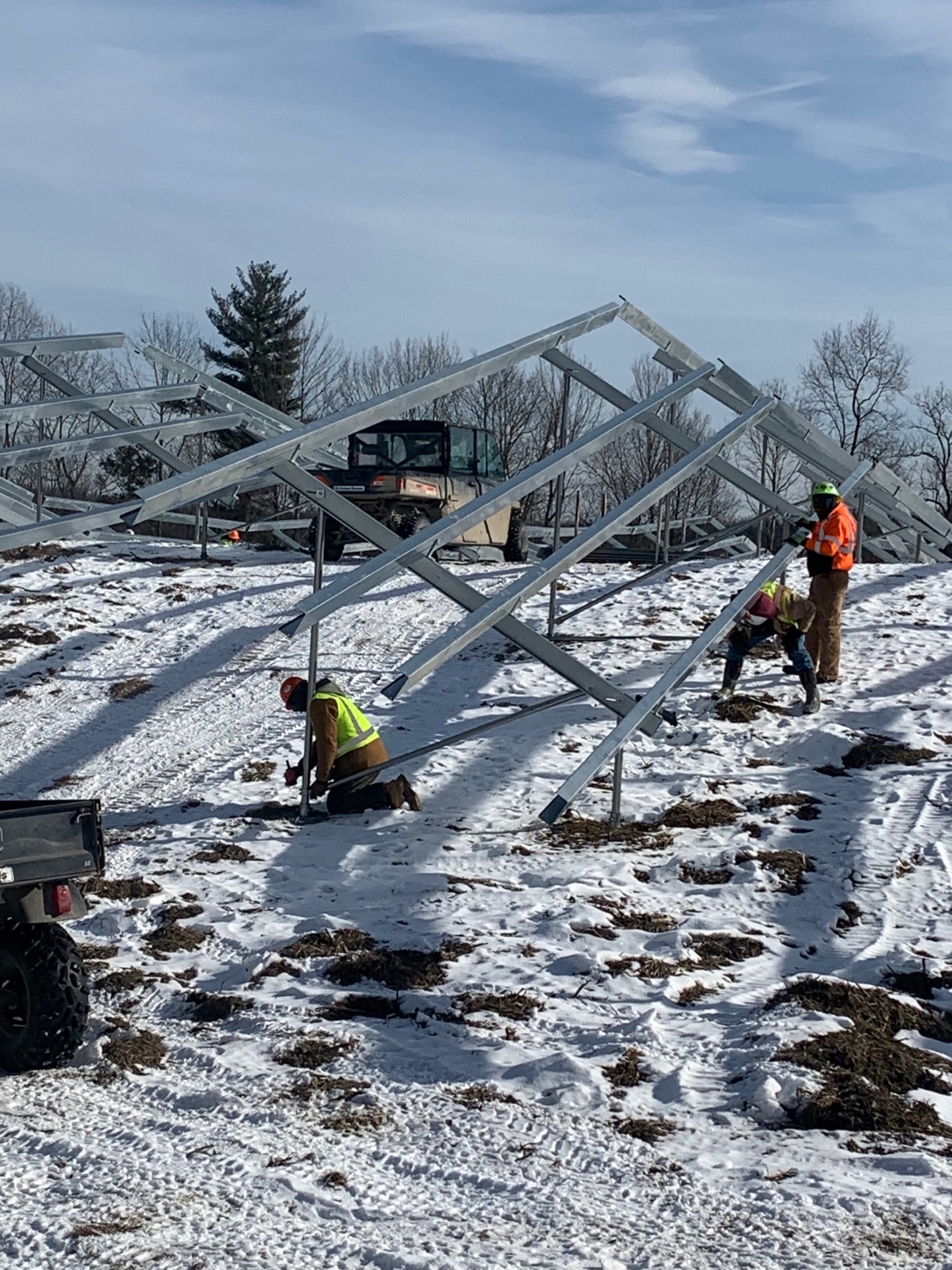
Two common foundation types used are ground screws and driven piles. Driven piles are suitable for flatter, softer terrain, while rugged, rocky sites benefit from ground screws. The former is a standard option for cost-effective PV and is quick and reliable to deploy from a material and construction standpoint—but has a higher chance of refusals in rugged or sloped terrain. The latter demands higher upfront material and construction costs, but minimizes refusals, and reduces the need for land grading and other civil expenses.
Whichever you choose, extensive tests and geotechnical assessments are needed to gain a deep understanding of the impacts of each and anticipate potential issues once installation begins—which can only be delivered by an experienced partner who knows the dirt.
Read the FAQ by our Director of Construction Management Randy Smith, who shares his insights on foundation solutions and best practices in northern conditions.
2. Anticipating frost heave
Frost heave is prevalent in the Northeast and Midwest regions due to a combination of several factors: namely a climate where temperatures remain below freezing for prolonged periods of time, fine-grained soils, and the presence of groundwater, which causes glacial till and the formation of ice lenses. These lenses cause the frozen ground to heave, which can jack up foundations. However, traditional solutions to prevent frost heave, such as lining the base with a PVC sleeve, or filling sites with gravel and frost resistant soil, can be costly and unreliable.
Terrasmart’s expertise spans over 15,000 key data points across the Northeast, allowing us to confidently determine what works best for your site. By accurately calculating the right amount of compression, tension, and lateral loads that foundations can handle, our engineers are able to recommend whether to use driven piles or ground screws, at the right cost and benefit balance. Depending on the site, a mix of both screws and piles may sometimes be the best solution.
Find out more about frost heave and how to overcome potential risks for your projects in our engineering team’s whitepaper, “Solid Foundation Strategies for Mitigating Frost Heave in the Northeast.”
3. Flexible, durable racking
With the Northeast’s harsh weather, racking must be able to withstand the elements. This means building solar structures that account for additional stresses caused by snow and wind. For hilly sites, racking also needs to be adjustable to accommodate for slopes and undulation.
Unlike buildings, which have established codes for snow, there is no standardized code for solar, posing additional challenges for engineers. Experts instead recommend solutions such as building racking with larger purlins, smaller spans, and reinforced material; or implementing a higher module front edge height and steeper tilt to allow for better snow clearance. Similarly, designing PV arrays for strong winds will require an in-depth knowledge, as well as tried and trusted procedures such as wind tunnel testing, to mitigate risks.
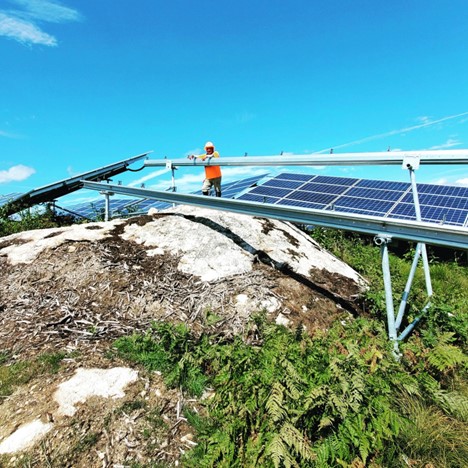
Having a partner with a deep understanding of wind and snow is necessary to gain a better understanding of the short and long-term impacts of weather on your project. Terrasmart has experienced design and engineering teams that can recommend the best strategies, products, and configurations for your sites—plus a diverse portfolio of racking solutions to back up our recommendations. Our uber-adaptable fixed tilt racks and single-axis trackers provide industry-leading slope tolerances—up to 36% for fixed tilt and 20% for trackers—to ensure efficient installations at a lower cost.
Dive deeper into optimal design strategies for snow and wind in our whitepaper, “Weathering Snow and Wind Challenges in the Northeast.”
4. Smart technology
Tracker systems are gaining traction in the Northeast, as the accompanying technology becomes more sophisticated and intelligent. While tracker systems typically come at a higher initial cost, there is also a great potential for increased returns over the long run when paired with smart software that helps boost energy output and protect assets. Terrasmart’s comprehensive tracker solution, TerraTrak and PeakYield™, combines mechanical components with intelligent control architecture, to maximize productivity on each site. The system is integrated with a weather API which allows us to forecast bad weather and proactively stow sites before bad weather approaches. PeakYield™ also increases energy yield with predictive analytics that reduces downtime.
5. Partnering with an experienced team
In a young but burgeoning industry like solar, nothing beats experience. Experience goes beyond just installation, but having a deep, insightful understanding of potential issues that may arise across the project lifecycle, and refined processes over thousands of sites to mitigate them. In the Northeast, which has so many challenges, having a partner with such experience is invaluable. With Terrasmart, we can conduct comprehensive testing, and better anticipate and resolve risks upfront, ensuring you stay on schedule and on budget. Our teams are also equipped with the know-how to design and engineer for snow and wind, plus the expertise with installation where there is refusal risk and high slopes.
A partner that grows with you
Despite the challenges, there is massive potential for solar to be profitable in the Northeast—provided you are well-prepared to tackle them. But to unearth value and gain a competitive edge, you’ll need an expert like Terrasmart, who has industry-leading expertise in the field and dedicated teams that work diligently to meet standards and deliver value to our clients. With 65% of our builds being in the Northeast and 12 years of experience installing systems in the region, our comprehensive portfolio addresses the region’s unique needs—ensuring reliable performance, reducing risk, and maximizing your returns.
Build successful solar in the Northeast with a reliable partner you can trust.

